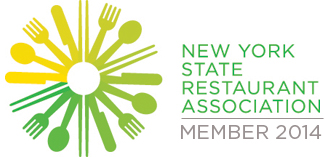Where money is concerned, whether you are in charge of the household cash or managing the finances of a multi-million dollar corporate business, the budget is the key to profitability. From business plan to exit plan, how much, when and for what you spend your hard-earned cash should be part of a long term plan, never a spur of the moment, fly by the seat of your pants decision.
Your independent restaurant business is in the same business as the multi-million dollar corporate one—that is, the business of making a profit. But there is one big difference. Instead of having access to financial whiz kids with MBAs, your resources generally consist of a spreadsheet, an off the shelf restaurant accounting program and your POS system—or not! You may even rely on handwritten tickets from which you will tally your own reports. It doesn’t really matter how you do it, as long as you DO it, that is—develop a budget and stick to it.
Budget projections
Format matters. Use a format that mirrors your month end financial reporting of profit and loss. Why? Because, the budgeting process doesn’t stop when you have assigned a cost to each of the items, nor after you have paid for the expense. In order for the process to work, you must be vigilant about comparing the actual cost to your projections.
In general, your budget should consist of revenue based on food and beverage sales, food and beverage cost, payroll expense, rent and other expenses which include such items as utilities and insurance. Budgeting each as a percentage of revenue as well as in dollars allows you to easily perform “what if” scenarios until you reach a budget that gives you the desired outcome. I recommend adding a line for prime cost—food cost and payroll expense combined, as this represents the majority of your restaurant operating expense and it therefore, is the most important of all of the expenses to control.
Cost control
Now that you have an objective, what can you do to pro-actively reach it? Take corrective action! Do what you must to control expenses (meet the objective), with special emphasis on prime cost: food cost plus labor.
Keep a log of daily food and beverage receipts. Use it to calculate food cost as a percentage of revenue for the same week. Food cost too high? That is, is it higher than the budgeted percentage? If so, have a one week moratorium on new purchases by adding specials to the menu. Use up what you have been storing away in your freezer for the past six months!
Your staffing schedule should not only include who is working when, but should be assigned a dollar amount as well. From that, you can calculate the labor hours in terms of percentage of expected revenue to make sure that it too, is within the budget. If not, no matter how much your kitchen and front of the house employees complain, reduce your staff!
Prepare a realistic budget which gives you the desired outcome, keep accurate daily records, compare and correct. These are the elements of a fail proof system for reaching the desired goal—money in the bank!

